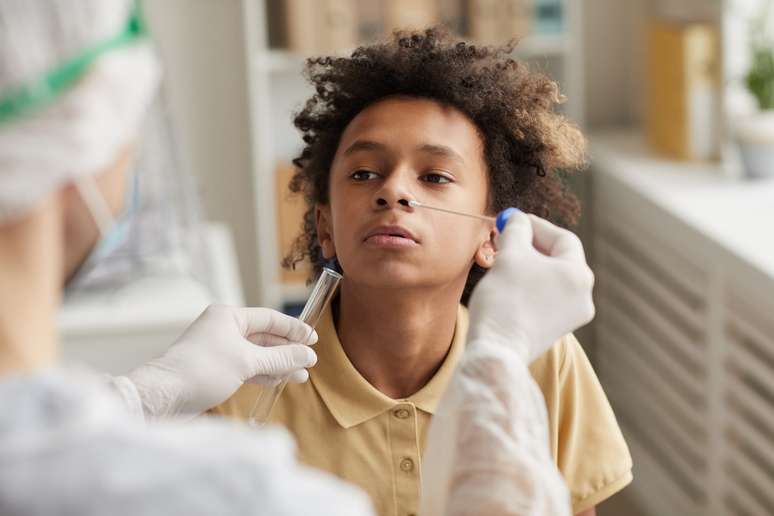The study shows that while there are some common complaints, there are also differences.
Many symptoms of long Covid are the same for school-age children and adolescents, but a large study published in the journal Jama (Journal of the American Medical Association) shows that there are some important differences.
A recent study estimates that around 400 million people worldwide have been dealing with long-term Covid (also called post-Covid syndrome).
Most common symptoms
According to the study, the most common symptoms in adolescents (12 to 17 years old) are loss of smell and taste, fatigue, and pain. In children (6 to 11 years old), gastrointestinal problems, pain, and neurocognitive issues, such as difficulty concentrating and sleep problems, stand out more.
In total, the researchers identified 18 prolonged symptoms in school-age children, the most common of which were:
- Headache (57%)
- Difficulty with memory or concentration (44%)
- Difficulty sleeping (44%)
- Stomach ache (43%)
In adolescents, 17 main symptoms were recorded (more similar to those of adults), the main ones are:
- Tiredness, daytime sleepiness or lack of energy (80%)
- Body, muscle or joint pain (60%)
- Headache (55%)
- Difficulty with memory or concentration (47%)
“Currently, most of the research on long Covid has focused on adults,” lead author Rachel Gross of New York University told the site. MedPage Today.
By exploring different symptom clusters across a broad age range, the researchers found that while many of the symptoms were similar, they were also distinguishable from each other.
This shows us that a one-size-fits-all approach would likely not be effective for diagnosing children with long Covid. Instead, it is likely that future screening or diagnostic tools – as well as treatments – will need to be tailored to specific age groups.”
In an editorial accompanying the study, Suchitra Rao of the University of Colorado noted that recent studies highlight the importance of assessing chronic conditions like long-term COVID across the lifespan, because there were clear differences in presentation among children, adolescents, and adults.
Specific for children or adolescents
She noted that headaches are common in children, for example, but less prominent in adolescents and adults. In addition, a cluster of gastrointestinal symptoms was unique to school-age children, and the children with long Covid in the sample did not suffer from loss of smell and taste.
Participants were recruited from more than 60 health centers and communities across the United States from March 2022 to December 2023. Their caregivers completed a survey that assessed 89 long-term symptoms across nine different domains.
Prolonged symptoms were those that lasted more than four weeks; that started or worsened since the beginning of the pandemic; and that were present at the time of the conclusion of the survey (at least 90 days after infection).
Participant Profile
Gross and his team included 751 school-age children with previous SARS-CoV-2 infection and 147 without previous infection. The median age was 8.6 years, with 49% girls, 60% white, 34% Hispanic/Latino/Spanish, and 11% black or African-American.
They also included 3,109 adolescents with prior infection and 1,360 without prior infection. The median age was 14.8 years, with 48% girls, 73% white, 21% Hispanic/Latino/Spanish, and 13% black or African American.
Gross said the study is “a first step toward a future tool to identify long Covid in children and adolescents, and that should evolve as researchers learn more.” He also stressed that more studies are needed on long Covid in children up to 5 years old.
Source: Terra
Ben Stock is a lifestyle journalist and author at Gossipify. He writes about topics such as health, wellness, travel, food and home decor. He provides practical advice and inspiration to improve well-being, keeps readers up to date with latest lifestyle news and trends, known for his engaging writing style, in-depth analysis and unique perspectives.





![Such a wonderful sun in advance: Summary of the episode of Thursday on August 14, 2025 [SPOILERS] Such a wonderful sun in advance: Summary of the episode of Thursday on August 14, 2025 [SPOILERS]](https://fr.web.img6.acsta.net/img/f2/d1/f2d1b407f018a903d063481a150a2e19.jpg)



